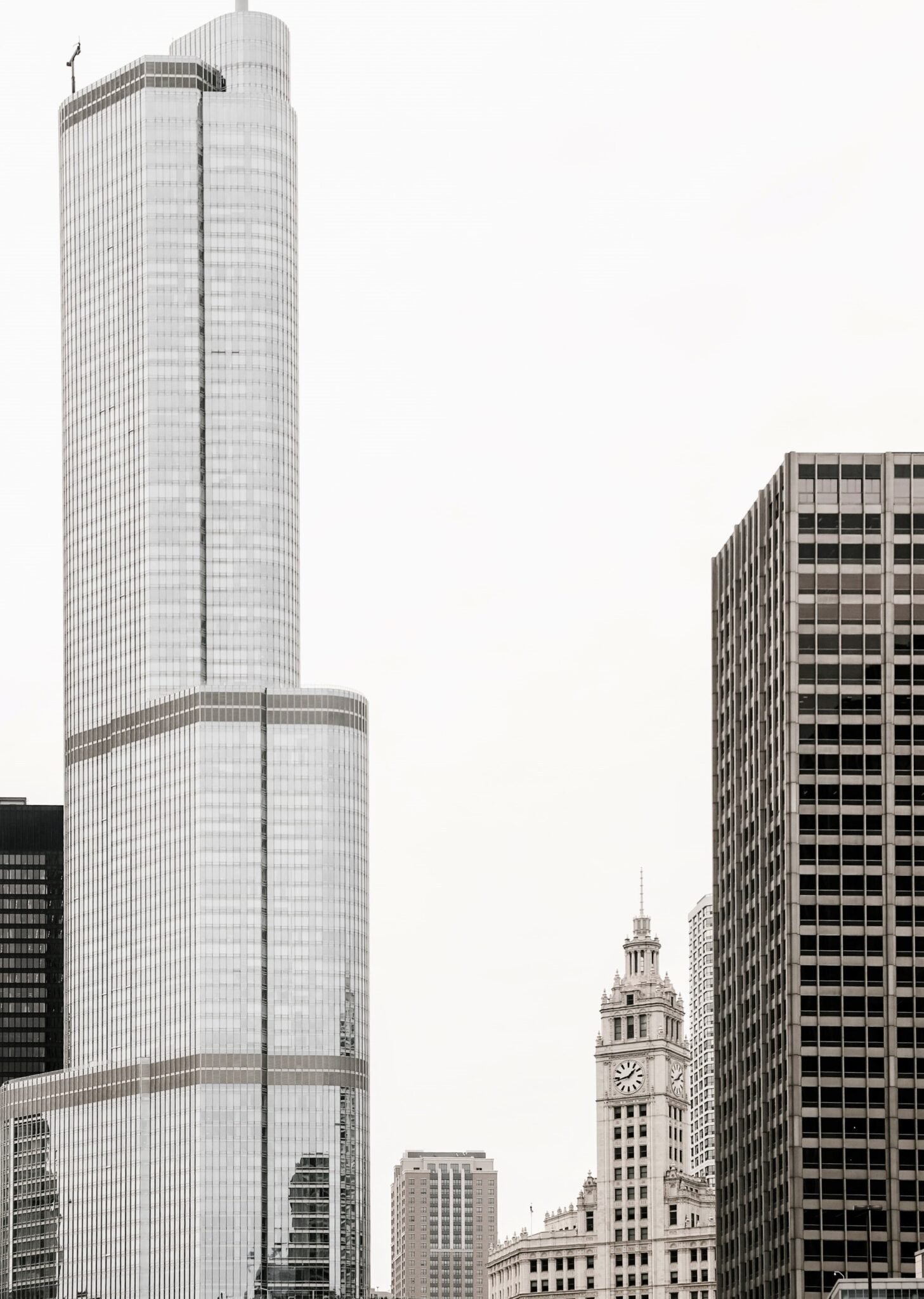Chasing Charming Streets: The Most Walkable Historic Neighborhoods in America
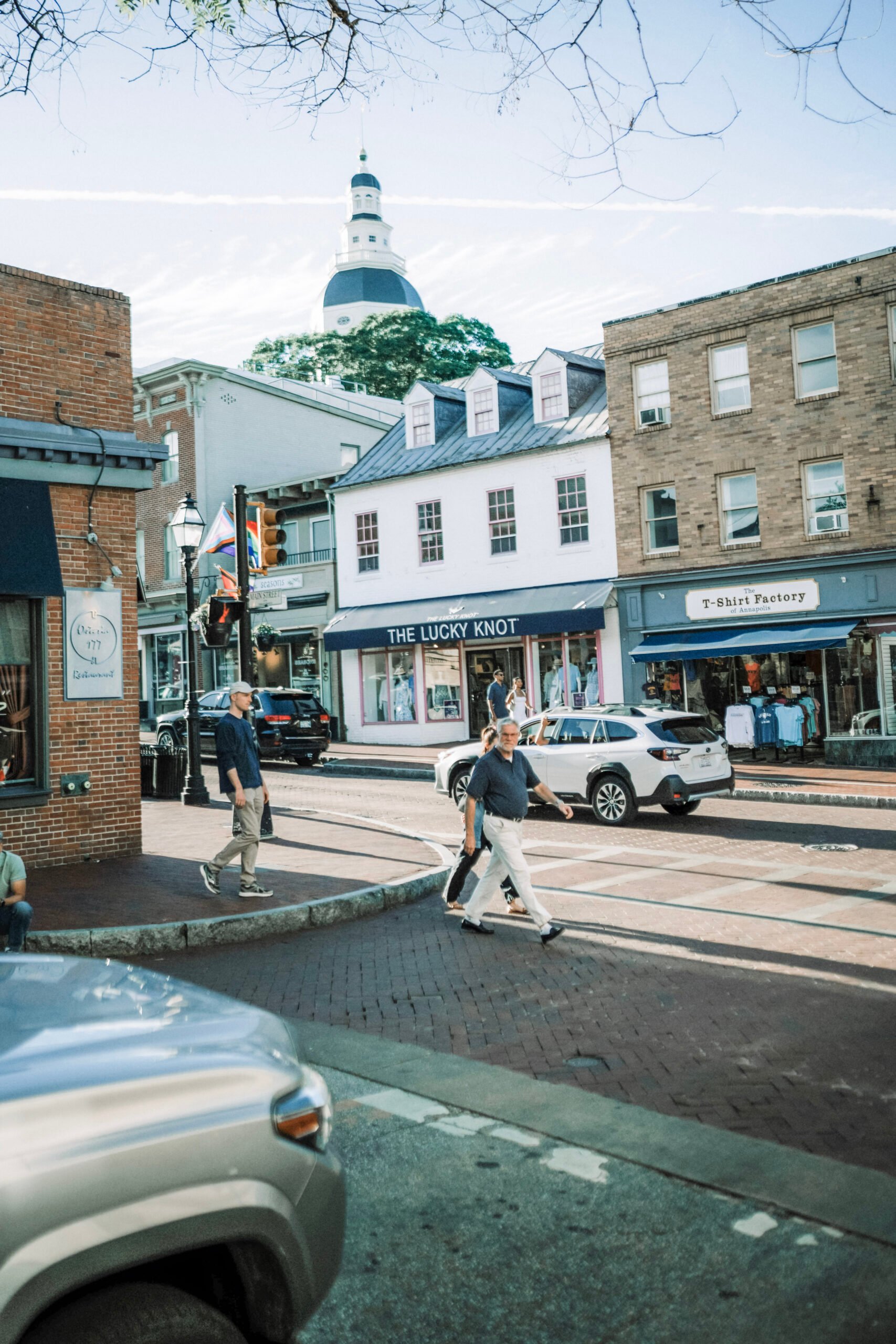
The Most Walkable Historic Neighborhoods in America
One of the best ways to familiarize yourself with a location you are visiting or relocating to is to get out and walk around the neighborhood.
Mingle with locals and learn about the historic landmarks in town. This is an excellent way to gain more appreciation for your community.
Not to mention, walking through a charming historic district is simply a great way to get some fresh air and enjoy your day.
There are many historic neighborhoods throughout America that have so much to offer. Especially those who enjoy learning about the early days of our country.
Here are some of our favorite communities that have made a conscious effort to preserve history. That way, the echoes of the past may be enjoyed and celebrated for generations to come.
The French Quarter in New Orleans, LA

The LaLaurie Mansion – Copyright US Ghost Adventures
New Orleans’ French Quarter is one of the most enchanting historic districts in the South. This part of New Orleans features an energetic nightlife.
As well as picturesque buildings, live music, great food, and an art scene that showcases local talent.
And if you enjoy spooky ghost tales, the French Quarter has you covered with historic haunted locations. Like the LaLaurie Mansion and the St. Louis Cemetery No. 1, which is home to the tomb of Voodoo Queen Marie Laveau.
There are several momentous places to visit if you want to take a step into the past. Here are a few of our top suggestions.
Jackson Square
Originally known as Place d’Armes around the time it was first established in 1721. Jackson Square was meant to be the new colonial capital of La Louisiane.
This town featured the latest engineering principles at the time, with a grid of streets surrounding a central square by the river.
It was designed to be the main public gathering place, and that notion has carried on into the 21st century.
Today, Jackson Square remains a timeless attraction in the heart of the French Quarter. For more than half a century, it has been an open-air community for artists.
A place where they have the freedom to paint, draw, create portraits, and display their work for everyone to see.
It is a favorable spot for locals and visitors alike. Offering a variety of shopping and dining options as well as popular historic landmarks, including the Presbytère, Cabildo, and the St. Louis Cathedral.
The Presbytère
Along with the Cabildo Museum located nearby, the Presbytère is one of the finest examples of Spanish colonial architecture that is still standing in the United States.
The two-story brick building was completed in 1813. While it was never used for its intended purpose as a rectory for the cathedral, it still served the city of New Orleans in a number of ways over the years.
It was initially a commercial building and later used as the home of the Louisiana Supreme Court from 1822 to 1853.
In 1911, it became a part of the Louisiana State Museum, housing collections and exhibits.
Today, the historic building houses several ongoing exhibits. Particularly ones that focus on Hurricane Katrina, the New Orleans tradition of Mardi Gras, and other popular topics.
The Cabildo Museum
The Cabildo is one of three 18th-century structures found in the French Quarter. It is a monument to the Spanish rule in New Orleans between 1769 and 1803.
It is also known as one of the most historically significant landmarks in the United States.
Furthermore, it was the location of several historic events. Including the transfer of the colony of Louisiana to the United States, also known as the Louisiana Purchase.
The event almost doubled the size of the landmass belonging to the U.S. The museum endured several disasters over the years, including the fire of 1794 and a destructive hurricane in 1915.
The museum was recognized as an invaluable national landmark in 1974. This placed more emphasis on its architectural and historical qualities.
St. Louis Cathedral
The St. Louis Cathedral was an architectural wonder when it was first built in 1849. It remains an iconic piece of New Orleans history.
While there are several impressive Catholic churches in the area, the St. Louis Cathedral is known by locals as the church of New Orleans.
The church is not only admired by parishioners, but locals and visitors from around the world. They appreciate the cathedral for its historical, spiritual, and aesthetic qualities.
In 1964, Pope Paul VI granted St. Louis Cathedral the rank of Minor Basilica. Recognized for its antiquity, splendor, pastoral zeal, and historical significance.
Those who visit the church, even if it is just to stand outside and admire the building, have mentioned feeling a sense of peace and comfort while they are there.
Colonial Williamsburg, VA

The Wren Building in Williamsburg – Copyright US Ghost Adventures
Colonial Williamsburg is considered to be a living historical museum. Many of the 18th-century structures have been preserved over time and remain as they were during the days of the American Revolution.
This community is home to several historic sites that will take you back in time. Including the Governor’s Palace and the renowned College of William and Mary.
Governor’s Palace
The Governor’s Palace is easily the most well-known landmark in Colonial Williamsburg. The grand brick building with gold embellishments and lavish gardens has a royal ambience about it.
The palace was built in 1722. It is home to seven British royal governors as well as the first two elected governors of Virginia.
The captial of Virginia was relocated to Richmond after it was destroyed by a devastating fire in the late 1700s.
The palace was reconstructed in the 1930s. Today visitors can take a tour of the interior as well as spend some time in the outdoor gardens.
This is an excellent place to visit while taking a walk through Colonial Williamsburg.
You can learn more about the families who once called the palace their home. All while admiring the impressive reconstruction, which is an honorable tribute to the original 18th-century home.
The Capitol Building
Throughout most of the 18th century, the Capitol in Williamsburg served as the center of British authority in Virginia.
It was the site of major debates over revolutionary ideas, justice, liberty, and fair representation. These discussions helped define what those values would mean for the American people.
The original Capitol building burned down on Halloween night in 1698. It was rebuilt and completed in 1705. Inside its walls, leaders delivered speeches that inspired protests against the Stamp Act and other key events that shaped America’s future.
Today, the Capitol Building operates as a museum and offers weekday tours.
College of William and Mary
The College of William and Mary is the second-oldest institution of higher learning in the United States. It was established in Virginia before Williamsburg was founded.
In fact, the town was developed around the school. In 1693, King William III and Queen Mary II signed a charter for the school to be established in the colony of Virginia.
The campus is home to The Sir Christopher Wren Building, the oldest American college building that is still in continual use.
There are several notable alumni from the college, including Thomas Jefferson, as well as George Washington, who received his surveyor’s license from the school.
It was also the first collegiate law school and the first institution to have a Greek-letter society, the Phi Beta Kappa.
Bruton Parish Church
Bruton Parish Church was built more than three hundred years ago. It is the oldest surviving building in Colonial Williamsburg.
During the Civil War, the church was used as a makeshift hospital.
Later, it became a burial site for about one hundred soldiers who died in the Battle of Williamsburg. Outside, the cemetery holds tombstones that date back to the 17th century.
The graveyard includes both unknown Confederate soldiers and church members from the colonial era. Today, the church is still active and has about two thousand members.
It has been restored to look as it did in colonial times. The original bell, cast in 1761, still rings. It was used to celebrate the signing of the Declaration of Independence.
Bruton Parish Church is also known for its ghost stories. Locals claim the spirit of a former Reverend’s wife roams the cemetery at night.
Some say she even appears inside the church on Sunday mornings. If you want to visit more haunted places, stop by the Wren Building at the College of William and Mary.
It is said to be haunted by former professors.
St. Augustine, FL’s Historic Downtown District
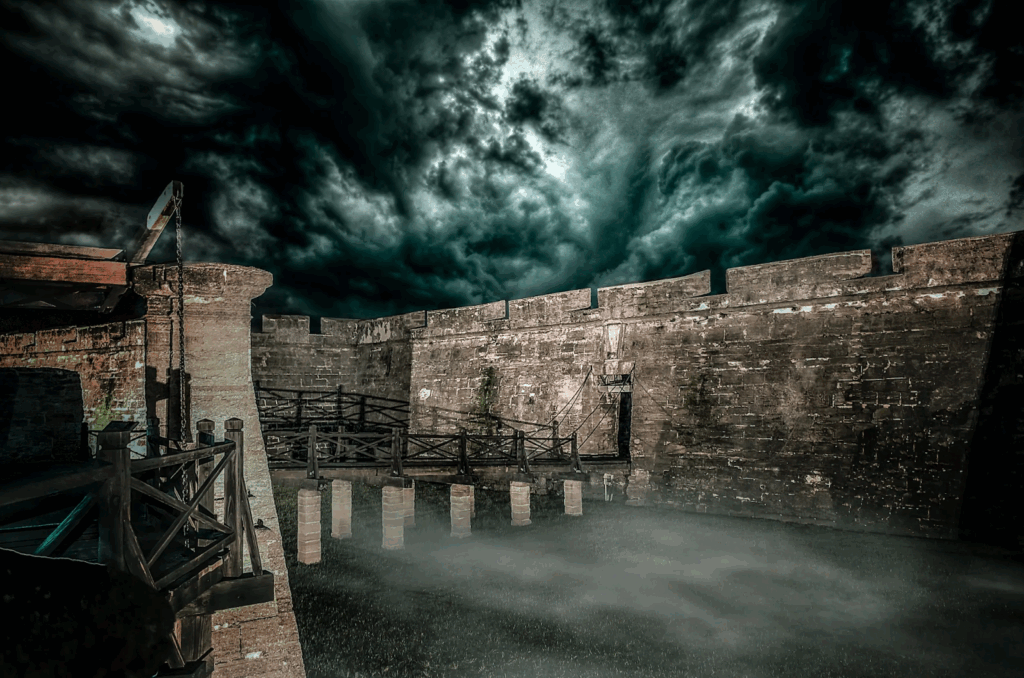
Castillo de San Marcos – Copyright US Ghost Adventures
The historic downtown district of St. Augustine is the oldest part of the city. Many of the buildings and landmarks date as far back as the 1700s.
This part of St. Augustine is listed on the National Register of Historic Places. It is home to more than 20 must-see sites, including the Castillo de San Marcos, the Oldest Wooden School House, and Flagler College.
Castillo de San Marcos
The Castillo de San Marcos is the oldest masonry fort in the continental United States. It is located on the bayfront just north of the Bridge of Lions.
This majestic Spanish stone fortress was constructed to defend Spain’s rightful place in the New World. It is more than 327 years old and considered to be the jewel of St. Augustine.
The construction of the fort began in 1672 and lasted for 23 years until it was finally completed in 1795.
While there were many other Spanish forts in the area at the time, this one, made from coquina, could withstand attacks from the enemy and was also fire-resistant.
After Florida became a British colony in 1763, the Castillo was used as a military prison during the Revolutionary War.
Today, self-guided tours are available at the Castillo, and visitors can witness real cannon firings and weaponry demonstrations at scheduled times.
The Oldest Wooden School House
The Oldest Wooden School House, located on St. George Street near the City Gate, dates back to the early 1700s.
The original building was built for the Genoply family and was a single-room building with a detached kitchen.
There was also an outhouse on the property with a privacy wall that was a good distance away from the house.
The exterior of the schoolhouse was made from red cedar logs and bald cypress wood that were secured together using iron spikes and wood pins, all of which were made by hand.
Today, visitors can tour the property and learn more about what life was like for schoolchildren during colonial times.
Flagler College
The unique architectural style of Flagler College combines history with the modern age. Located inside what was one of Henry Flagler’s Gilded-Age hotels, today it is a private four-year college.
The school opened in 1968 and has an average enrollment of 2,600 students.
Before it was converted into a school, this 19th-century Ponce de Leon hotel served presidents, royalty, dignitaries, and celebrities.
The hotel offered a variety of modern conveniences for the era, including running water, electricity, and a Thomas Edison clock.
The decor of the hotel was impressive, with a grand collection of more than 79 Louis Comfort Tiffany stained glass windows.
Lightner Museum
The Lightner Museum is located inside the former Alcazar Hotel, which was constructed in 1888 by Henry Flagler.
The hotel hosted thousands of guests while in operation and featured top-of-the-line recreation facilities, including the world’s largest swimming pool.
The hotel closed its doors during the Great Depression and was sold to Otto Lightner in 1947, who gifted it to the city.
Lightner transformed it into the present-day museum that now showcases art and artifacts he collected from his travels.
If you are interested in exploring haunted historic places in St. Augustine’s downtown district, along with Castillo de San Marcos, you should also check out the St. Augustine Lighthouse and the Tolomato Cemetery. All are believed to be haunted.
Downtown Annapolis, MD
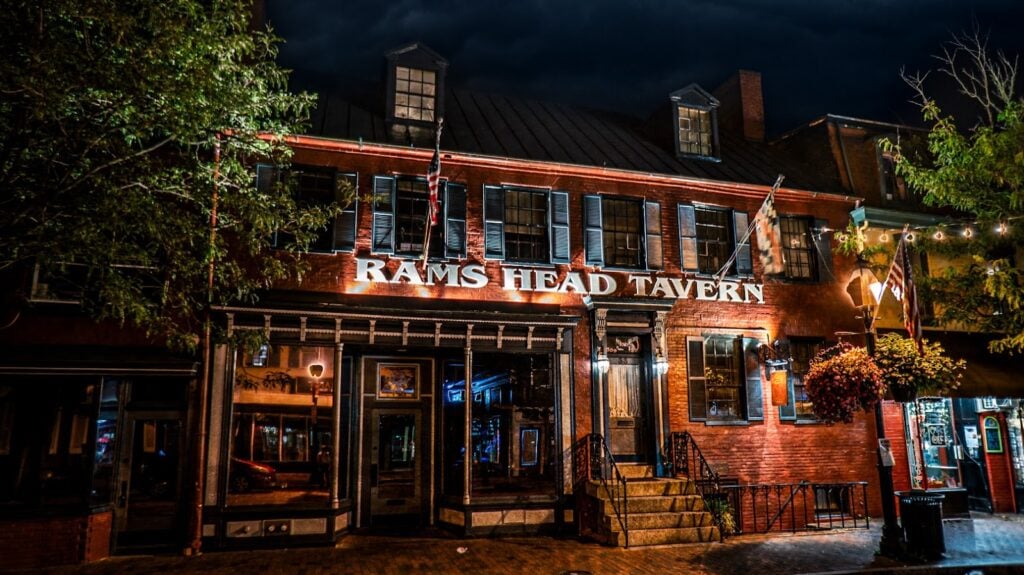
A haunted tavern in Annapolis – Copyright US Ghost Adventures
Annapolis, MD, has been described as the most walkable town in America. This historic waterfront town has not changed much since it was established in the 17th century.
It is home to several 300-year-old buildings that have been converted into modern-day businesses, including music venues, restaurants, and boutiques.
If you are in town for a few hours or staying for the weekend, there are plenty of historic sights to see in downtown Annapolis.
Here are a few of our suggestions for the best historic locations to check out.
Shiplap House
The Shiplap House is one of the oldest buildings in Annapolis that is still standing. It was built around 1715. The house gets its name from the shiplap siding. A random-length flush siding that was commonly used in shipbuilding.
Initially, it was a store and later a local tavern before becoming a residential property.
There were several different owners of the house, including merchants and artisans. The artist Francis Blackwell Mayer used the Shiplap House as his private residence from 1877 to 1957.
The house later fell into disrepair and was purchased by the Historic Annapolis Foundation, which has worked to restore it over time.
Today, it is recognized as a National Historic District Site.
William Paca House and Garden
The William Paca House and Garden is a treasured historic home in Annapolis. It is a must-see location for those who want to learn more about the history of the Chesapeake Bay.
Including the role that Annapolis played in the American Revolution.
The home was built in the 1760s for William Paca. Paca was one of the signers of the Declaration of Independence and also the governor of Maryland at the time.
Visitors are welcome to explore the restored Georgian-style by taking a guided tour. There are plenty of antiques inside, such as period furniture and paintings that will take you back in time.
Outside the mansion, two acres of land include a garden with native and heirloom plants, terraced landscapes, and a spring-fed pond.
It is a peaceful place to visit while you are enjoying a day out in Annapolis.
Banneker-Douglass-Tubman Museum
The Banneker-Douglass-Tubman Museum contains a wealth of Black history. In particular, it has a curated overview of African Americans’ contributions to Maryland over the years.
Especially in the Annapolis and Baltimore communities.
The museum is named for the scientist Benjamin Benneker and the social crusader Frederick Douglass, as well as the heroic social activist Harriet Tubman.
The trio played a significant role in fighting against slavery in the 19th century. and the staff members at the museum are very knowledgeable when it comes to sharing their stories.
The original museum was located inside the former Mount Moriah African Methodist Episcopal Church, located in Annapolis’ historic district.
It has since been moved to the new four-story addition of the building, using the church’s north façade as its interior lobby.
The museum hosts various exhibits, including art shows that display work by Maryland-based artists depicting the history and culture of African Americans.
The Old Treasury Building
If you are a history enthusiast, the Old Treasury Building is one location you shouldn’t miss while visiting Annapolis.
This colonial-style building was constructed in the 1700s and features a style that makes it the ideal backdrop for photos.
While it was once used as a main building for the state’s treasury, it is now a museum that showcases the rich heritage of colonial Maryland.
Inside, you will find artifacts from centuries ago as well as interesting exhibits that take you back to a simpler time.
You May Also Like:
- An Unforgettable Niagara Falls Helicopter Tour
- 5 Reasons to Choose a Private Wine Tour in Napa
- Tour the Distillery District via Segway with Go Tours Canada
- 5 Best Amusement Parks In The US
You’ll have the chance to learn about the financial and political history of the state while also discovering more about the daily lives of Annapolis residents in the 18th and 19th centuries.
If you are interested in visiting haunted locations in this historic district, the Shiplap House is a great place to start.
The building is believed to be haunted by ghosts, including the spirit of a 5-year-old girl named Audrey, who can cause electronics such as phones to malfunction.
Make sure to join Annapolis’s #1 rated ghost tour for a deeper look into this city’s haunted side!
You Ready to Explore?
Taking a walk through these historic districts is an excellent way to learn more about each city’s past and how much it has changed over time.
Many of these locations have helped to preserve the facts about the early days of America and can be a useful resource for educating a new generation on the traditions and cultures of our past.
Which one of these walkable historic neighborhoods are you going to explore first?
Let me know, til then—cheers m’deres!

PIN FOR LATER:
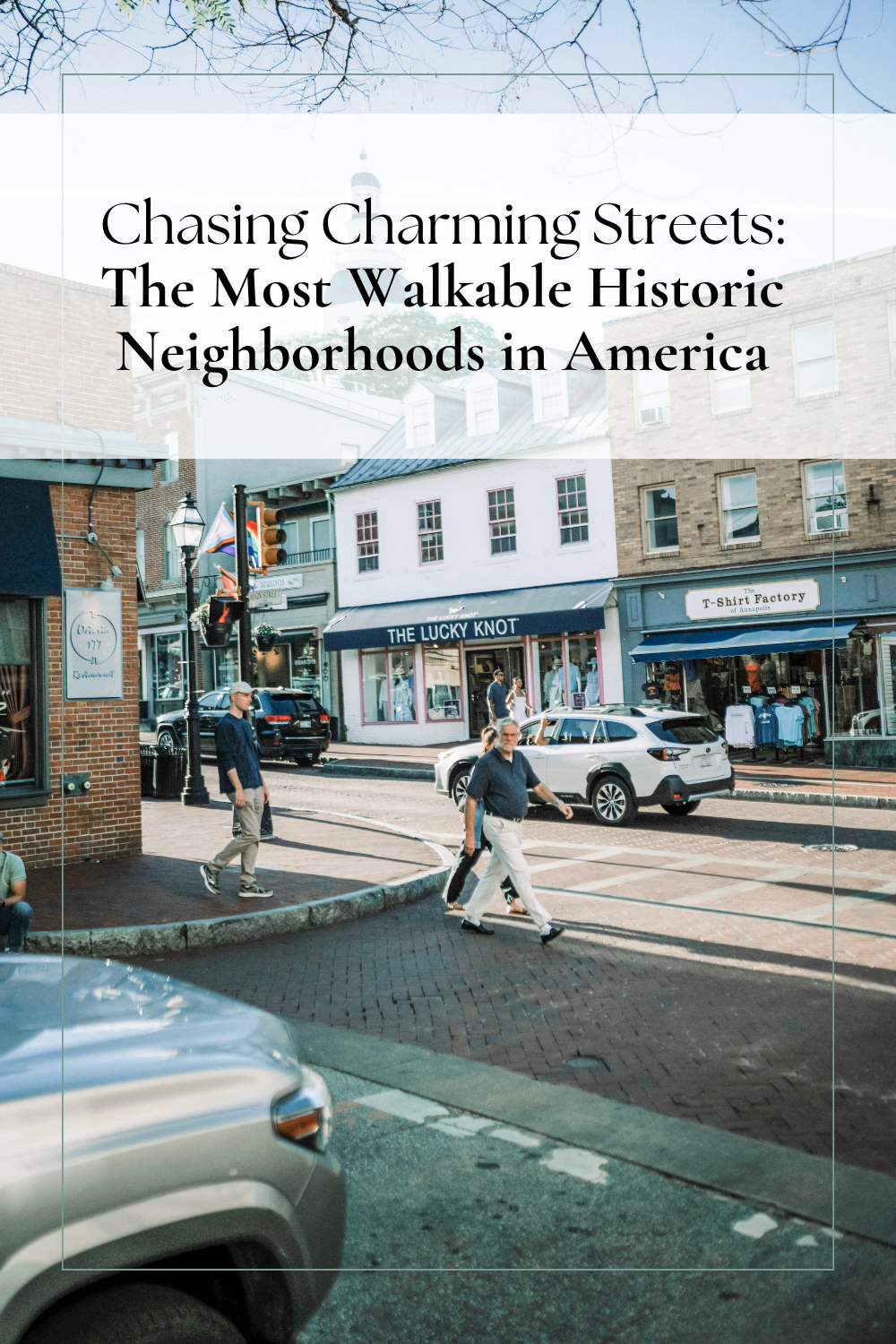

Nancy Polanco is a freelance journalist, lifestyle content creator, and editor of Whispered Inspirations. She is a proud Mom to Gabby and Michaela and partner and best friend to Darasak. Having worked as part of a health care team for almost a decade, Nancy is happy to be back to her passion. She is a contributor to the Huffington Post, TODAY’s Parents, and an Oprah Magazine Brand Ambassador.




